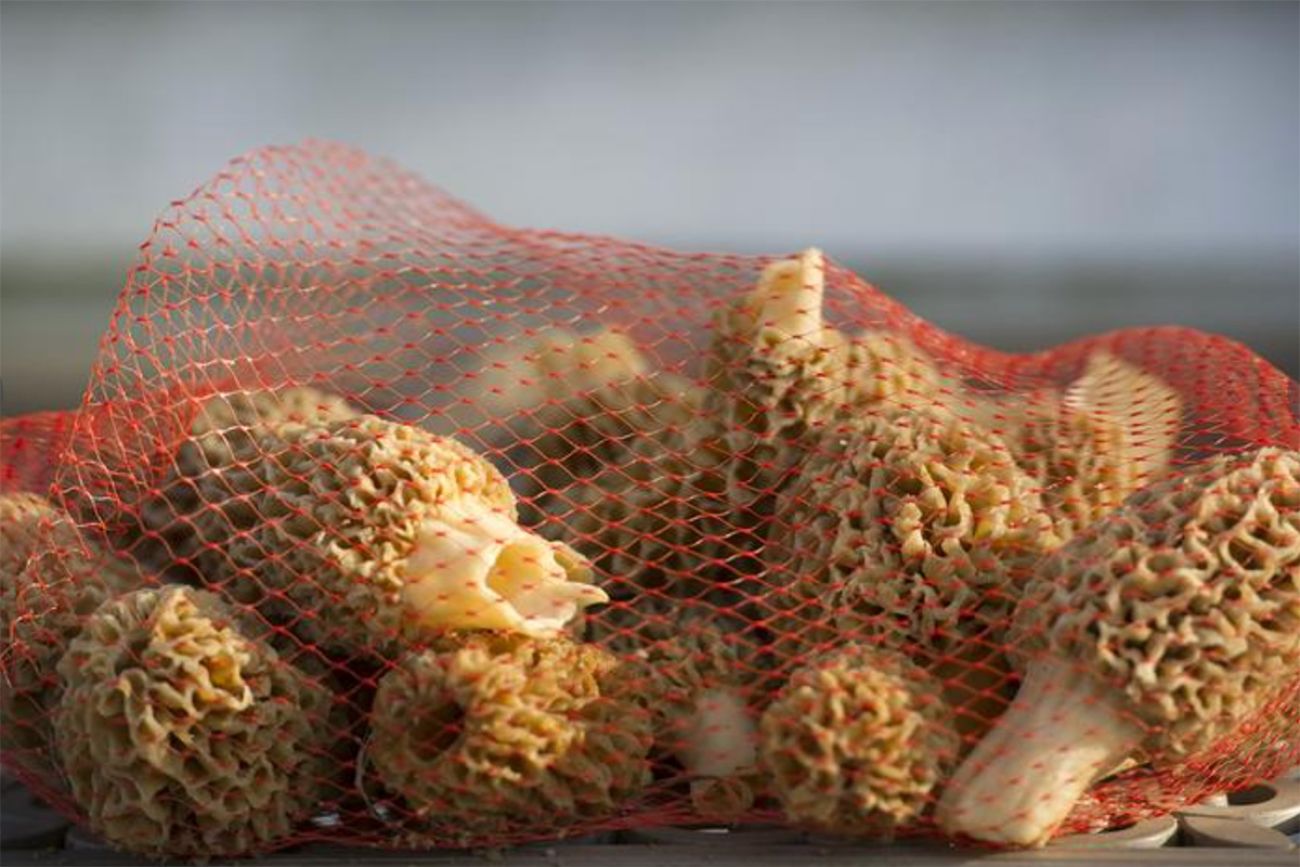Michigan’s morel mushroom season: Where to find them and how to identify them

- Morel mushroom season in Michigan begins in mid-April and lasts through early June.
- The mushrooms can be found in forests, under pines and in fields where there was a fire
- The DNR has an interactive map that shows foragers where they can find the mushrooms
People in Michigan should soon be able to collect prized morel mushrooms as foraging season begins.
Morels, known for their distinctive pitted, honeycomb-like caps, begin to appear in late spring through the beginning of summer.
Morel mushroom foraging season lasts long, beginning in mid-April and continuing through mid-June. Hunters in southern Michigan may start to see them earlier in the season while hunters in the Upper Peninsula will see them later in the season.
Related:
- Love is in the air for turkeys in Michigan, but spring hunting season looms
- Dead wolf mystery in south Michigan deepens, prompts criminal probe
- PFAS-tainted foam in Lake Huron prompts citizen outcry
This spongy mushroom is unique in its meaty, tender texture and earthy flavor. Morels can be spotted in various places across the state like fields, forests, in areas where wildfires or prescribed burns have occurred or even the edges of paved roads.
Morel species
There are several species of morel mushrooms that can be found in Michigan but not all of them are edible. The most common is the white morel, which fruits or grows in late May. It can be found in old orchards, beech-maple forests, oak woods, burned-over meadows and occasionally lawns.
Black morels are another species that can be commonly found in Michigan. Younger morels are usually gray but older ones are black. These mushrooms fruit in early May and can be found under ash, aspen, or cherry pines. While these are edible, eating them in large amounts or with alcohol may cause stomach pain.
“Black morels will be spread out pretty much everywhere, whereas the white morels will be associated pretty much with a tree,” said Antoine Delaforterie, member and hunt leader for the Michigan Mushroom Hunters Club.
Half-free and burn-site morels are other types of mushrooms that can be found. Half-free morels are yellow and grow in oak-hickory and beech-maple forests. Burn-site morels can be found in places where there was a fire within the last year. Both are edible but hunters should remove any ash from burn-site morels before eating them.
Morel mushroom map, plus location tips
The DNR recommends that hunters learn how to properly identify true morels, versus lookalikes that can be harmful if consumed.
The verpa species is often mistaken for the black morel but the best way to distinguish the two is to check to see if the cap, which is the body of the mushroom, connects to the stalk that supports the cap. Free-hanging verpa mushrooms should not be consumed.
The DNR suggests that hunters interested in foraging for mushrooms use a map in forests to avoid getting lost, use a mesh bag or basket to store the mushrooms to preserve them longer, and wear comfortable clothing when out.
Selecting young and fresh mushrooms, with no wormholes is the best, as these last longer. After collecting them, they should be refrigerated in a paper bag until consumed.
“Any mushrooms, even morels, you should cook them,” Delaforterie said. “Do not eat them raw. There's a good possibility you'll get sick. That applies to the Morels you find in the stores too. You have to cook them.”
Check this interactive map to find prescribed-burn areas where the DNR says morel mushrooms might be found.
Michigan Environment Watch
Michigan Environment Watch examines how public policy, industry, and other factors interact with the state’s trove of natural resources.
- See full coverage
- Subscribe
- Share tips and questions with Bridge environment reporter Kelly House
Michigan Environment Watch is made possible by generous financial support from:
Our generous Environment Watch underwriters encourage Bridge Michigan readers to also support civic journalism by becoming Bridge members. Please consider joining today.
See what new members are saying about why they donated to Bridge Michigan:
- “In order for this information to be accurate and unbiased it must be underwritten by its readers, not by special interests.” - Larry S.
- “Not many other media sources report on the topics Bridge does.” - Susan B.
- “Your journalism is outstanding and rare these days.” - Mark S.
If you want to ensure the future of nonpartisan, nonprofit Michigan journalism, please become a member today. You, too, will be asked why you donated and maybe we'll feature your quote next time!



